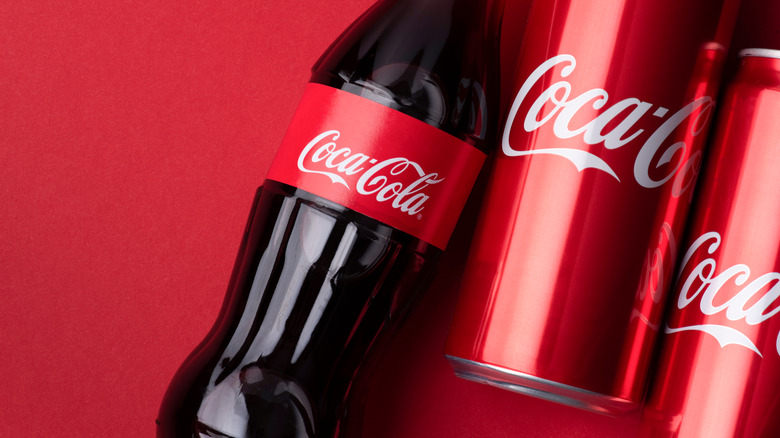Where Does The Caffeine Removed From Decaf Coffee End Up?
Are you a decaf coffee lover? If so, you may be part of the group of millennials that has popularized decaf coffee, or perhaps you are prioritizing your health when it comes to your beverage decisions (via Perfect Daily Grind). Many go for decaf coffee in their daily brew to control caffeine intake throughout the day. Sometimes we want something lighter, lower in caffeine, and less bitter, but enjoy a cozy hot drink or a tasty cold one.
If you are a decaf drinker or just a curious mind, have you ever wondered where the caffeine removed from decaf coffee actually ends up? From the variety of decaf coffee options out there, we can assume there is a bunch of extracted caffeine stored somewhere. As BBC reports, most coffee gets decaffeinated by soaking coffee beans in solvents ... and then what? Do they go just go to waste or someone else uses them? The million-dollar answer might be in other important industries where caffeine plays a key role.
The soda industry and pharmaceutical companies receive caffeine left from decaf coffee production
So, it is true that millennials have popularized decaf coffee, but the numbers don't exceed regular coffee consumption. From 2011 to 2020, decaf was one of the least consumed coffees in the U.S., and in its 2017 peak, Americans only drank 0.4 cups of decaf a day, (via Statista). As reported by The Wall Street Journal, an important part of the profit decaf coffee manufacturers made comes from selling caffeine to soda and pharmaceutical companies. So most of the sodas, iced teas, energy drinks, or energy pills get their caffeine from this.
Behind this process, there is a huge and innovative world. NPR reports that there are several methods to remove caffeine and the largest companies for doing so are located all over the world, from the U.S. to Germany to China. For example, there is one company in Houston where a chemical is pumped through beans in order to pull the caffeine out, and this is later sprayed with water to wash carbon dioxide out and leave the caffeine ready to use. Other companies just used water, while others are dedicated solely to refining caffeine, removing impurities, and then selling it to companies.

